SHELDON ORRIN PARSONS
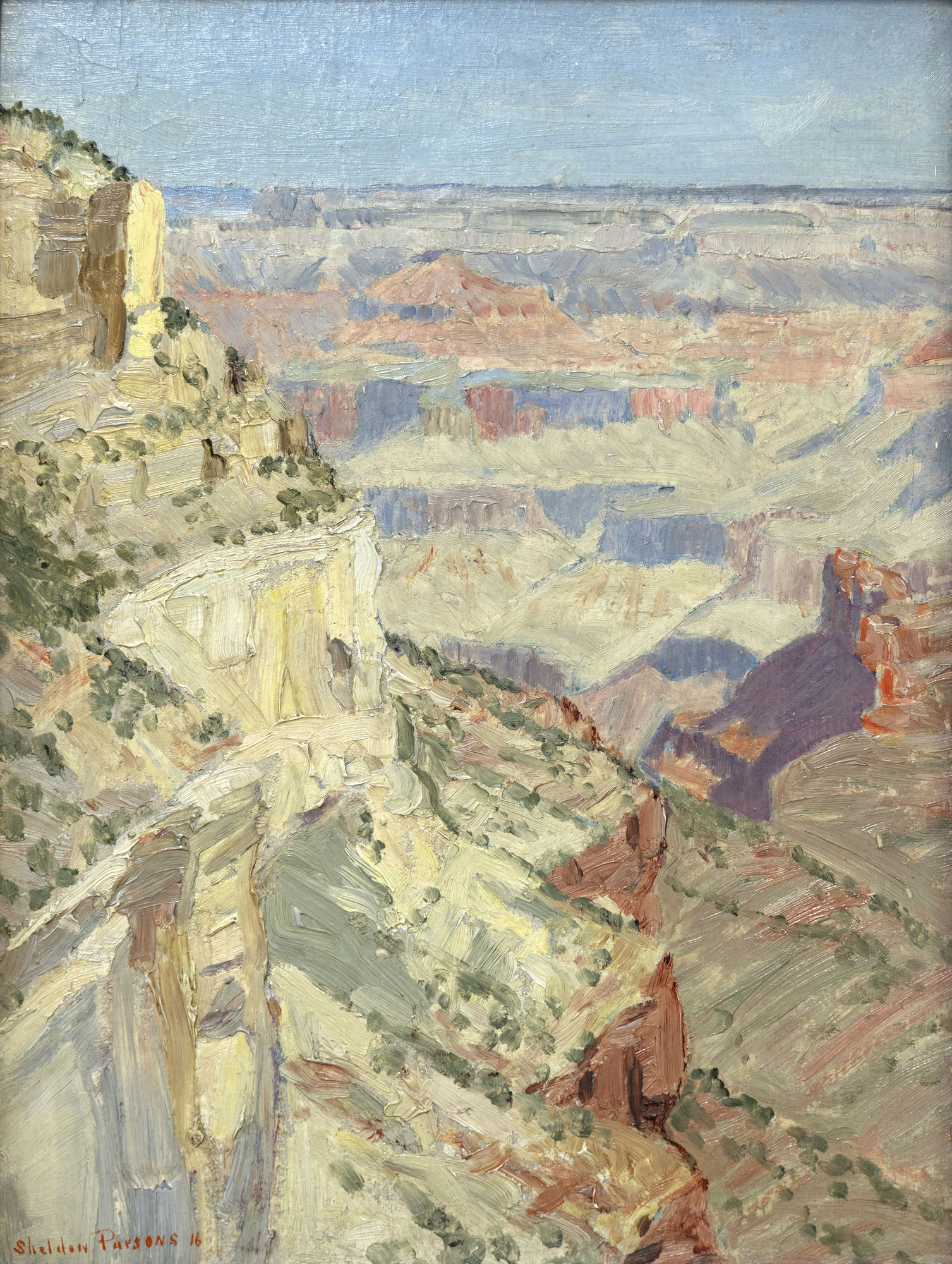
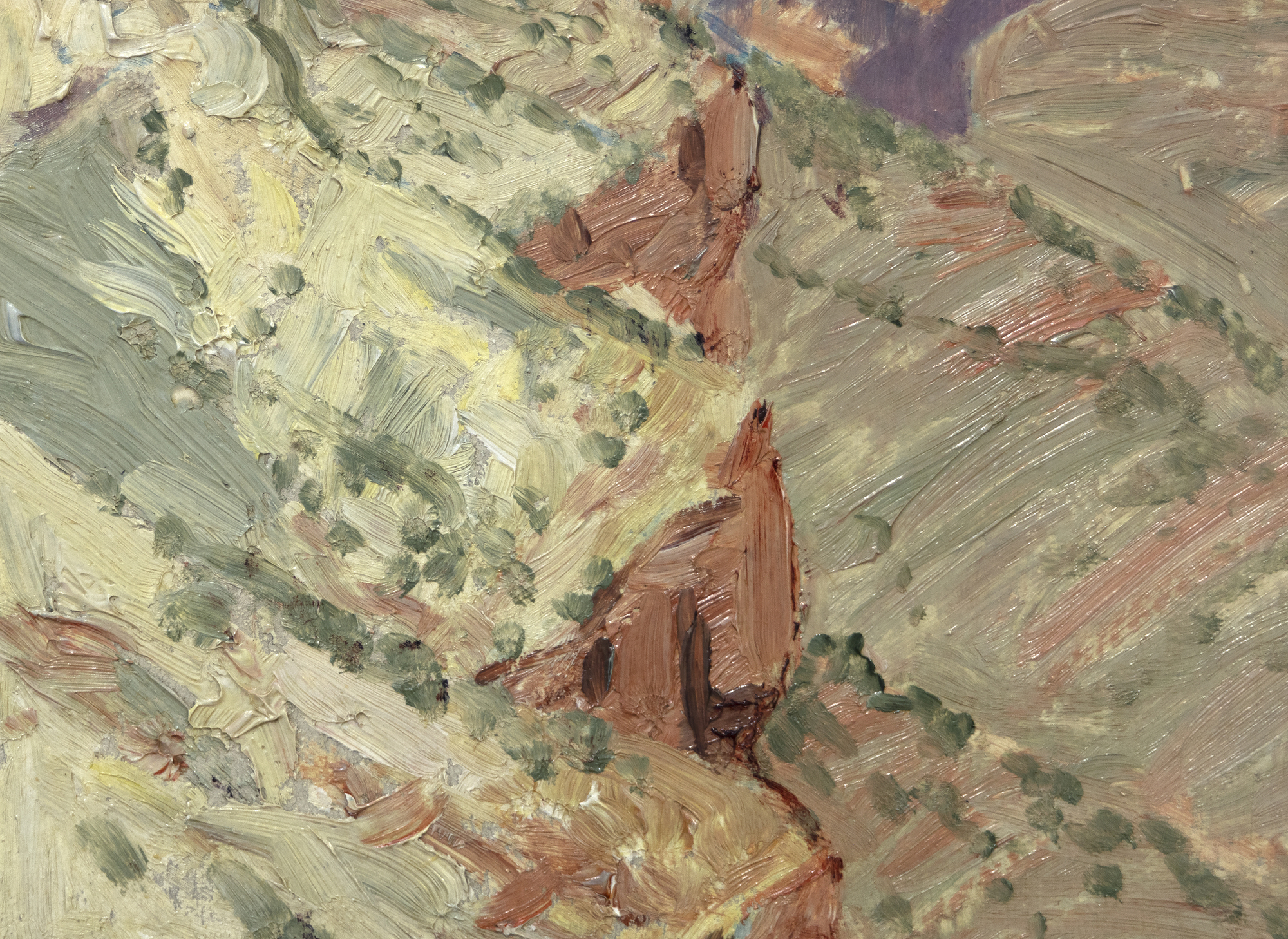
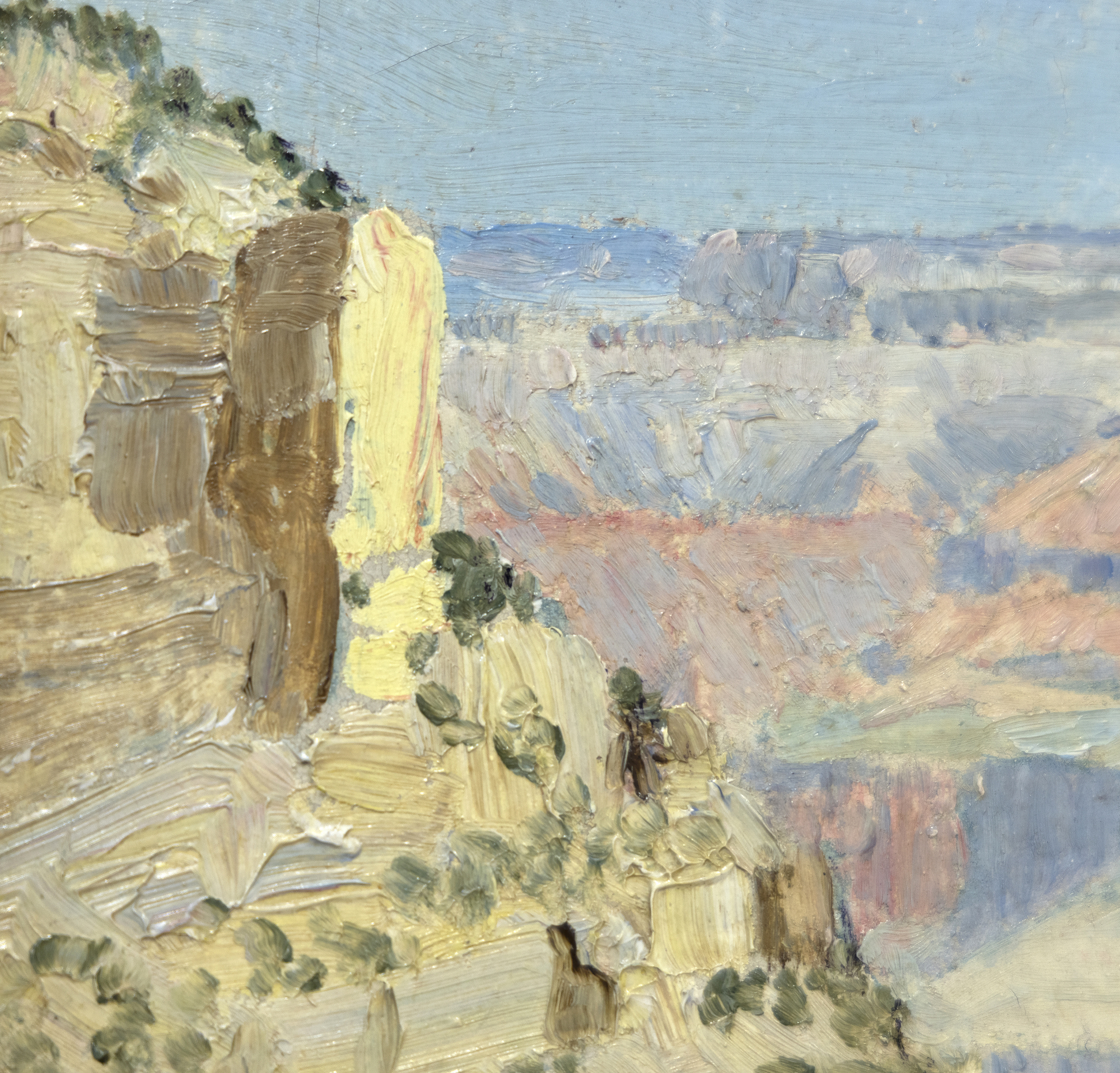
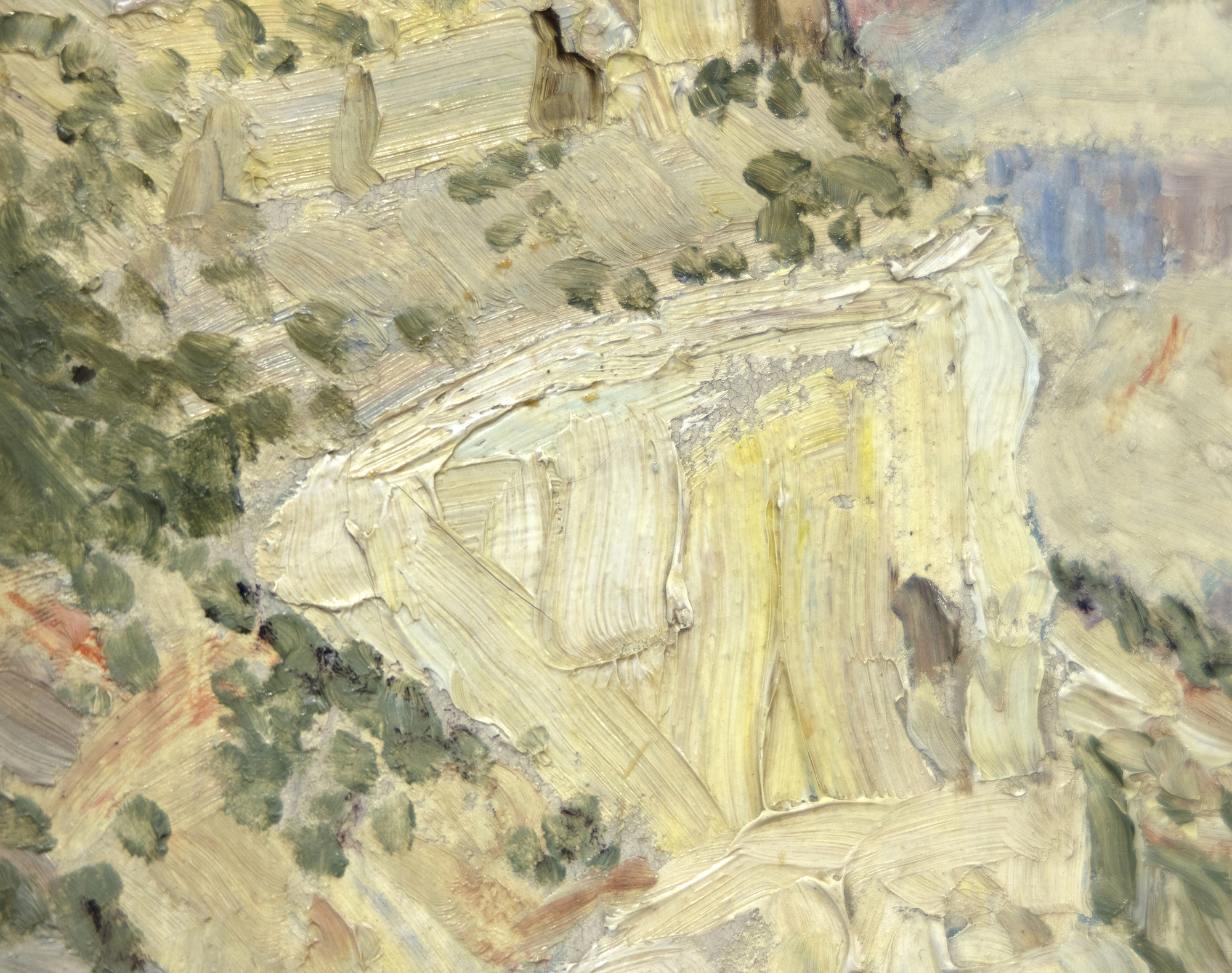
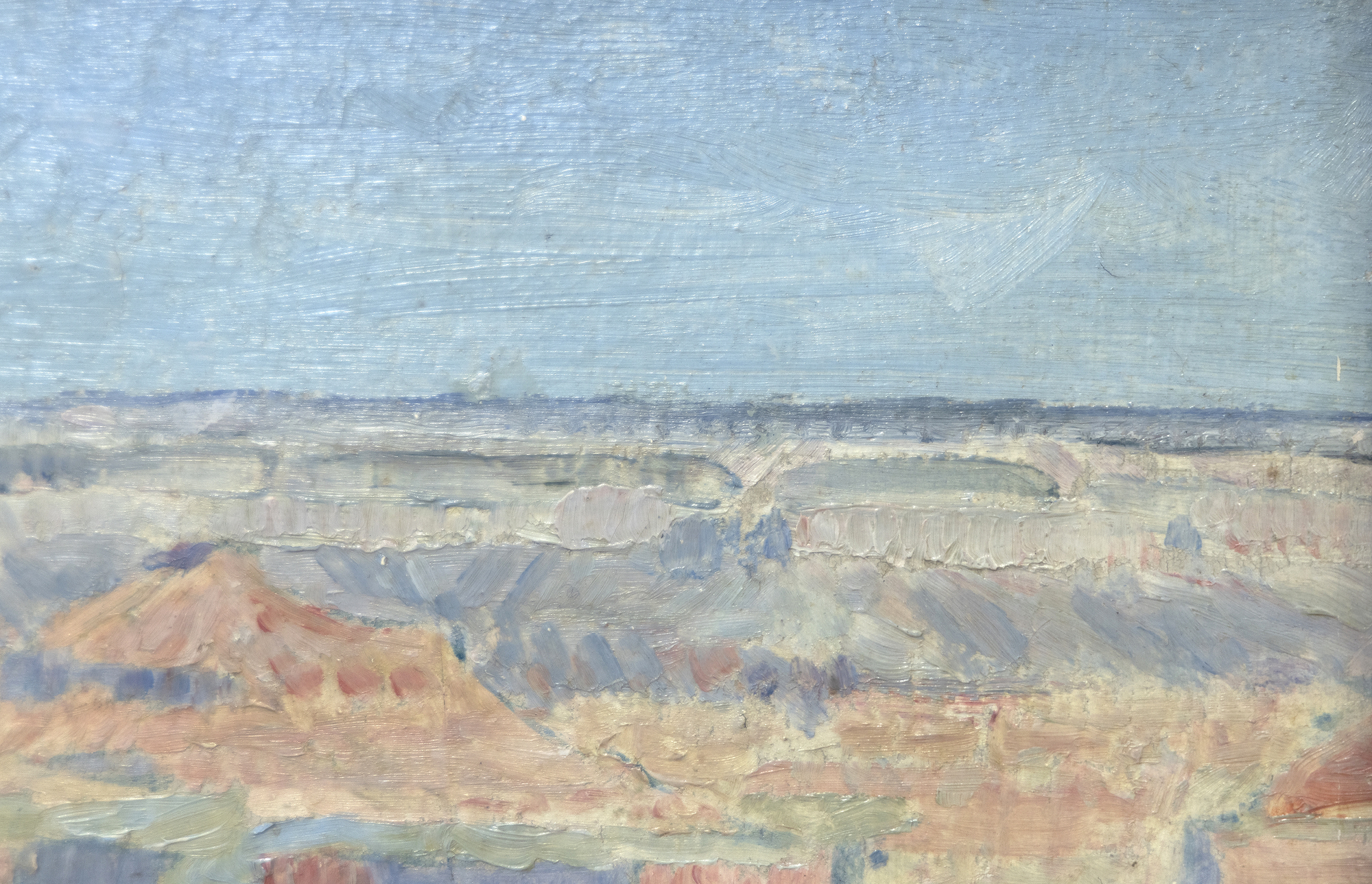
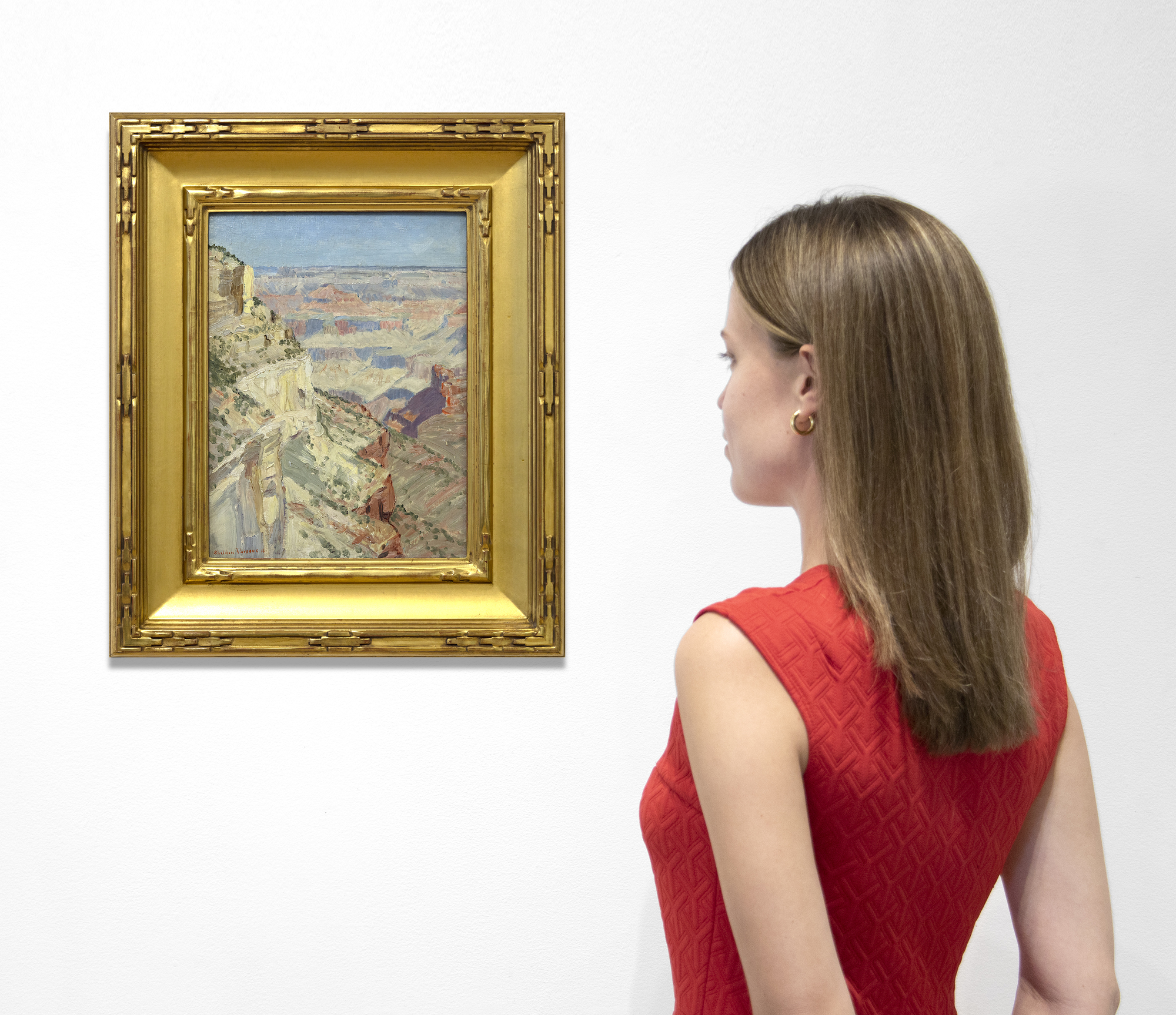
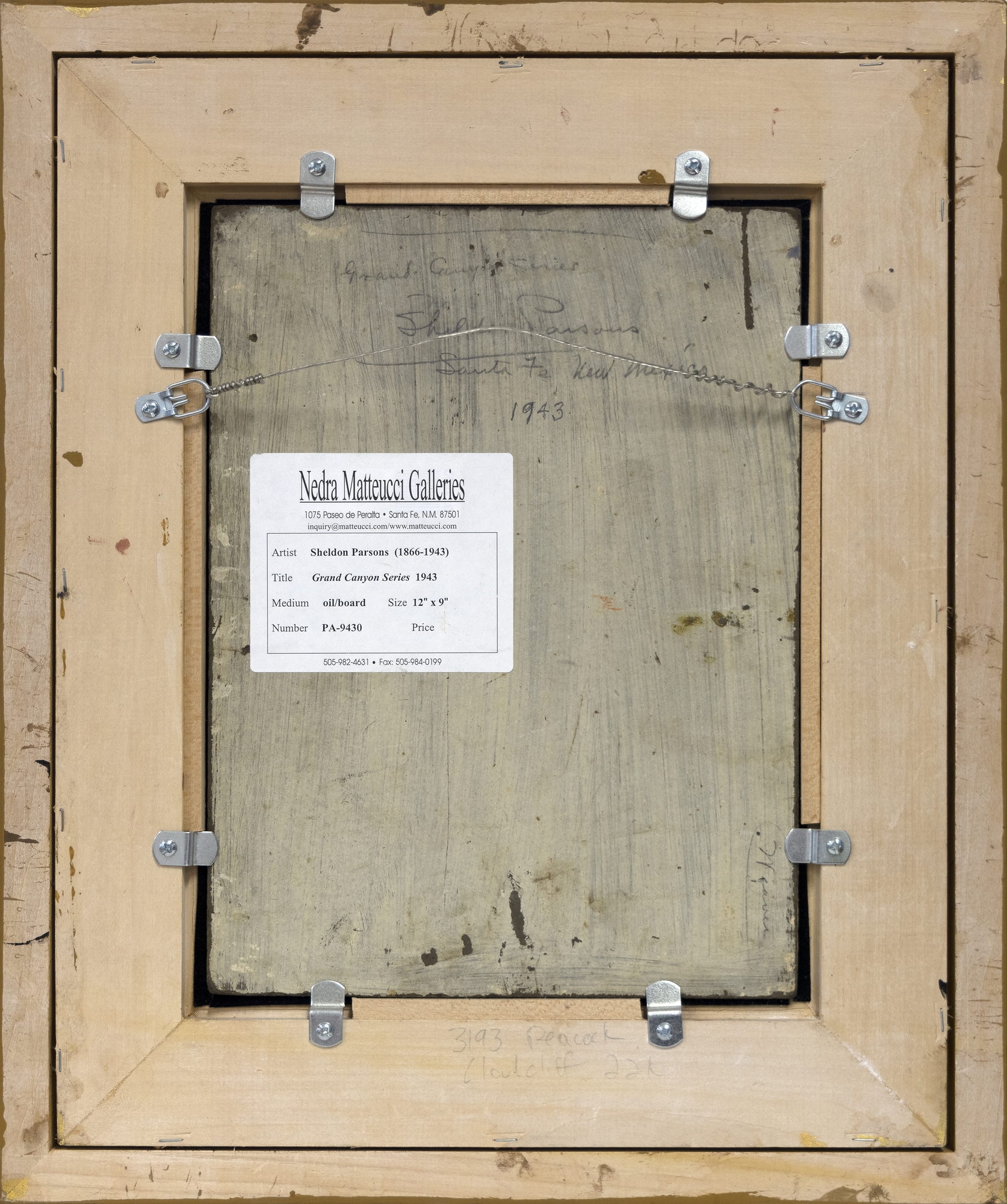
Provenance
Nedra Matteucci Galleries, Santa Fe, Nouveau MexiqueCollection privée, acquise auprès de la personne susmentionnée, le 12 décembre 2004.
Parsons a peint le Grand Canyon à plusieurs reprises. Immortalisé en peinture par des artistes allant de Thomas Moran aux fondateurs de Taos et à d'innombrables artistes contemporains, le premier exemple connu de Parsons, Morning in the Canyon, est daté de 1916.


